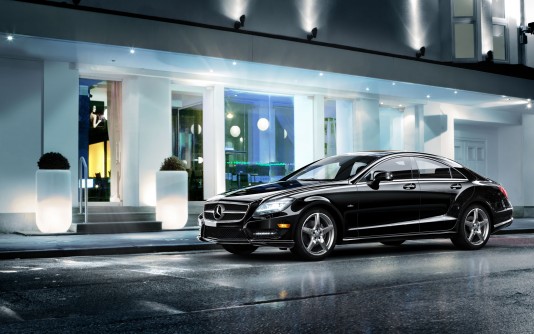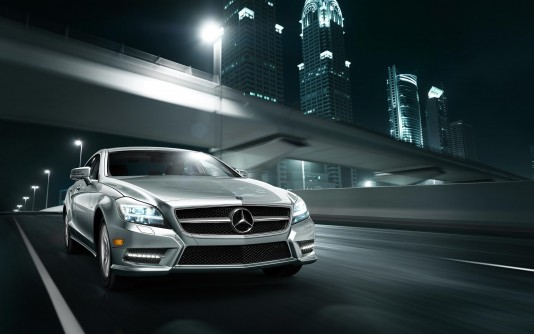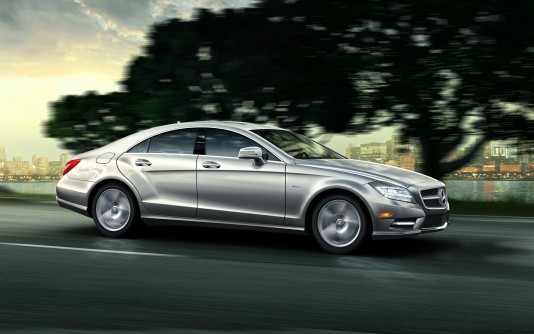Freelance CG artist Jeff Patton went from one hour per rendering to eight minutes inside Autodesk 3ds Max.
Jeff Patton is a prolific, self-taught, freelance computer graphics (CG) artist who creates mechanical illustrations for major companies including Honeywell, Delta Controls, and Johnson Controls, among others. He is also a recognized expert in Autodesk 3ds Max 3D software and Nvidia Mental Ray rendering software; an active beta tester who has taught an Autodesk Master Class and writes tutorials on techniques for using both software solutions effectively.
 In early 2010, some photorealistic vehicle renderings Patton created caught the attention of Mercedes Benz USA (MBUSA), which approached him to develop images for its website and print advertising. He was given CAD data for each vehicle along with environmental backplates, and tasked with compositing CG vehicles into those backplates while accentuating the cars’ curves via reflections and lighting. He knew that the images he created would need to be a blend of photorealism and studio imagery—cars that appear to be physically photographed, but which are touched by Patton’s artistry in reflections and lighting and further refined by MBUSA to create the most appealing visual possible.
In early 2010, some photorealistic vehicle renderings Patton created caught the attention of Mercedes Benz USA (MBUSA), which approached him to develop images for its website and print advertising. He was given CAD data for each vehicle along with environmental backplates, and tasked with compositing CG vehicles into those backplates while accentuating the cars’ curves via reflections and lighting. He knew that the images he created would need to be a blend of photorealism and studio imagery—cars that appear to be physically photographed, but which are touched by Patton’s artistry in reflections and lighting and further refined by MBUSA to create the most appealing visual possible.
When he started the project, Patton was using Autodesk 3ds Max with Mental Ray and the Chaos Group V-Ray rendering engine on a CPU. Given the large file sizes he was working with and the amount of rendering that the images required, his work was going slowly, with renders taking approximately an hour per image.
Patton believed Nvidia Iray rendering software—which can leverage the extra processing power available on Nvidia Quadro and Tesla graphics processing units (GPUs)—would be of benefit for his Mercedes Benz product visualization project. So he configured a workstation with Nvidia Quadro 6000 and Tesla C2070 GPUs, both featuring 6GB of memory to handle the high resolution 6K images Mercedes Benz required, along with the 5GB of model and scene data they were supplying.
 Patton said, “After I finished my first full Mercedes Benz project with the new Nvidia setup, I was stunned. Rendering out the images at 6K in the past took me about an hour per image using the CPU. With Iray and Quadro, I was able to knock that down to eight minutes — EIGHT minutes! It’s a huge benefit to be able to turn things around that much faster.”
Patton said, “After I finished my first full Mercedes Benz project with the new Nvidia setup, I was stunned. Rendering out the images at 6K in the past took me about an hour per image using the CPU. With Iray and Quadro, I was able to knock that down to eight minutes — EIGHT minutes! It’s a huge benefit to be able to turn things around that much faster.”
Since he began using Iray with Nvidia hardware on the Mercedes Benz project, Patton’s renders have been running up to 7.5X faster than they had on Mental Ray and V-Ray running on the Intel Core i7 960 3.2GHz CPU.
In addition to the speed improvements achieved with Nvidia GPU acceleration, Patton also realized improved clarity and detail in his images thanks to the photo-realistic capabilities of Nvidia Iray. “The glass, the headlights—you can see every detail,” says Patton. “I wasn’t able to get that before without using really high sampling rates in other programs, and even then I couldn’t pull out all of the details I can see now. There was a huge increase in clarity and detail that iray was able to pull out.”
 Nvidia Iray also saves Patton time during the scene setup and render configuration phases of his workflow. “With iray I can just set my glossy material value to what I want and move on. I don’t have to spend time configuring material and light sample values to balance grain and render speed or adjusting overall image sampling.”
Nvidia Iray also saves Patton time during the scene setup and render configuration phases of his workflow. “With iray I can just set my glossy material value to what I want and move on. I don’t have to spend time configuring material and light sample values to balance grain and render speed or adjusting overall image sampling.”
Since all of his image processing now takes place on the GPU, Patton can use the CPU for other tasks. “In so many ways, Iray running on the Nvidia GPUs allows me to work faster and create higher quality images. I’m handling more images in less time, and I can do more things with that time I save—whether it’s taking on more work or spending more time with my family.”
He added, “The GPUs have made such a dramatic impact on my work. It’s such an impressive increase in both detail and speed. The Nvidia GPU hardware and Iray are an amazing combination. I can’t wait to see how much further they develop in the future.”





